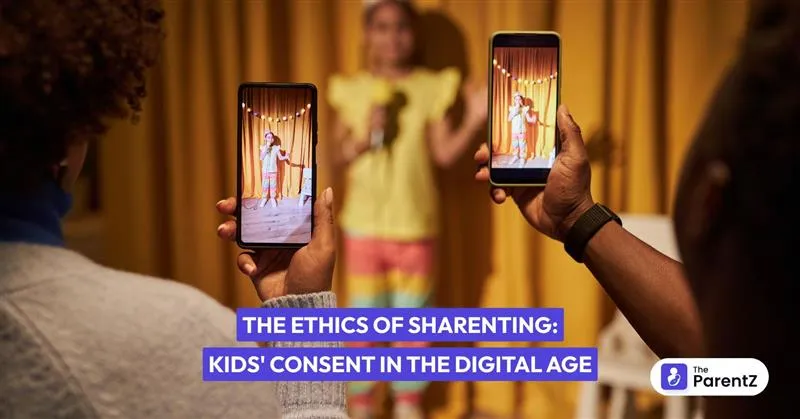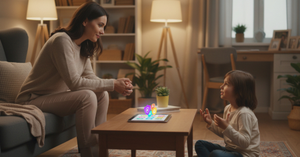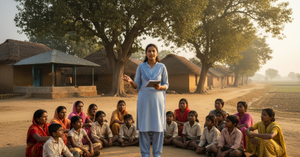Remember flipping through dusty family photo albums as a kid? Those embarrassing baby pictures were safely tucked away at home, seen only by visiting relatives and close friends. Fast-forward to today—those same childhood moments are now broadcast to hundreds, thousands, or even millions of strangers online.
"Look how cute they are when they're crying!" "She's going to hate this when she's older, but I had to share!" "His first day of school meltdown got us 50,000 views!"
Welcome to the age of sharenting, where children become content before they can even say their first words. Every tantrum, milestone, and vulnerable moment becomes potential social media gold. Parents document everything from positive pregnancy tests to birth stories to daily routines—creating a permanent, public record of childhoods that were once private. But in this rush to share, we're forgetting to ask one essential question: what about the children who never consented to becoming the stars of our digital stories?
The Sharenting Phenomenon
Look around any social media platform today. Pregnancy reveal videos, gender announcements, birth vlogs, monthly baby updates—the content is endless and often extremely popular. Many family channels and parenting accounts boast millions of followers, with videos featuring children regularly generating tremendous engagement.
What started as proud parents sharing occasional milestones has evolved into something much bigger. For some, documenting their children's lives has become a full-time job, complete with brand deals, sponsorships, and a steady income stream.
When Children Become Content
The uncomfortable truth is that babies, toddlers, and even teenagers featured in these posts have no real say in their digital presence. A newborn can't consent to having their birth shared with thousands of strangers. A five-year-old might enjoy being on camera, but cannot possibly understand the implications of permanent online publicity.
Think about it: many children today will grow up having had their entire lives, from ultrasound images to awkward teenage phases, archived online for anyone to see, comment on, and judge. Their digital footprint begins before they can even speak.
The Dark Side of Digital Exposure
While parents may focus on the positive aspects, the reality of internet exposure can be harsh:
- Cruel comments: People online can be extraordinarily mean, criticizing everything from a child's appearance to their behavior to developmental milestones
- Privacy concerns: Once content is posted, control is lost—images and videos can be downloaded, shared, or even manipulated
- Digital permanence: Even if parents eventually delete content, screenshots and saved versions may exist forever
- Future embarrassment: What seems cute now might be mortifying to a future teenager or adult
- Identity formation issues: Children growing up on camera may struggle to develop their authentic identity separate from their online persona
The Benefits Aren't All Bad
To be fair, sharenting isn't all negative. When approached thoughtfully, sharing family moments online can:
- Create meaningful connections with distant family members.
- Build supportive communities for parents facing similar challenges.
- Document precious memories in a convenient format.
- Normalize diverse family experiences.
- Sometimes even generate income that benefits the family.
However, these benefits often overshadow the potential long-term consequences for the children involved.
Finding Middle Ground: Respect and Boundaries
The solution isn't necessarily to never share family content online. Rather, it's about approaching sharenting with greater awareness and respect for children's autonomy:
- Ask for permission when possible: Even young children can understand simple explanations about sharing their images. "Would it be okay if Grandma sees this picture?" is a start.
- Consider the future adult: Before posting, ask: "Would my child thank me for sharing this when they're 15? 25? 35?"
- Limit identifying details: Avoid sharing full names, locations, schools, and other information that could compromise safety.
- Quality over quantity: Not every moment needs documentation. Save sharing for truly significant occasions rather than daily exposure.
- Review privacy settings regularly: Ensure content is only visible to intended audiences.
- Delete past content periodically: Give your child a fresh start as they grow older.
- Listen when they object: If a child expresses discomfort with being photographed or posted online, respect that boundary immediately.
The Conversation We Need to Have
Society is just beginning to reckon with the first generation of children who've grown up as content. Some are already speaking out about feeling exploited, embarrassed, or violated by their parents' sharing habits.
As parents, caregivers, and digital citizens, we must start considering children not just as subjects of our social media presence but as future adults with their own right to privacy and dignity.
Conclusion
The next time the urge strikes to share that adorable tantrum, embarrassing mishap, or private moment, pause to consider: Is this my story to tell? Or does it belong to someone who hasn't yet been given the chance to decide?
Our children may thank us one day, not for making them internet famous, but for protecting their right to define their own digital identity when they're ready.








Be the first one to comment on this story.